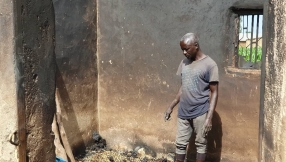Churches set sights on 90% carbon reduction
These include the use of smart meters, new technologies like biomass and solar panels.
The report has been compiled by engineering consultancy Arup with the support of the Diocese of London and the Carbon Trust.
It sets out in detail the range of low carbon options available to churches, including everything from the use of wax candles compared with different kinds of artificial light, to upgrading catering equipment.
The report is based on a sample of 20 churches covering a range of buildings and sites around London, and aims to demonstrate that the diocese’s environmental target of cutting carbon emissions by 80% by 2050 is achievable.
Brian Cuthbertson, Head of Environmental Challenge, the Diocese of London said: “This report will prove immensely valuable for the thousands of churches in London and across the country striving to reduce their environmental impact.
“The Diocese of London has set itself a target of cutting carbon emissions by 80% by 2050 and we can now plot a roadmap for how to achieve these savings.”
Speaking at the launch of the report yesterday, the Bishop of London Dr Richard Chartres said: “We hold this earth in trust for generations to come. The Christian Church as a community, which embraces generations past as well as those who are yet to be born, has not developed the policies we shall be discussing this afternoon as a dull echo of a fashionable consensus but because we love the earth which a generous God has given to us and we acknowledge our solidarity with the most vulnerable communities on the face of the earth, those who, even now, are experiencing the first consequences of climate change.”













